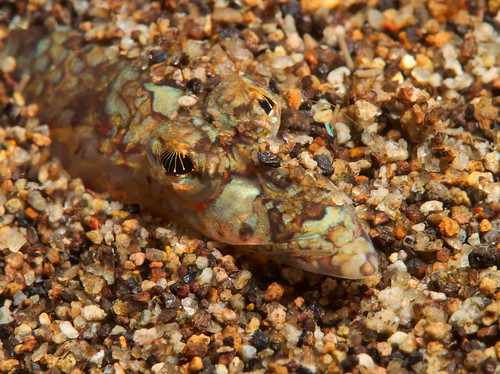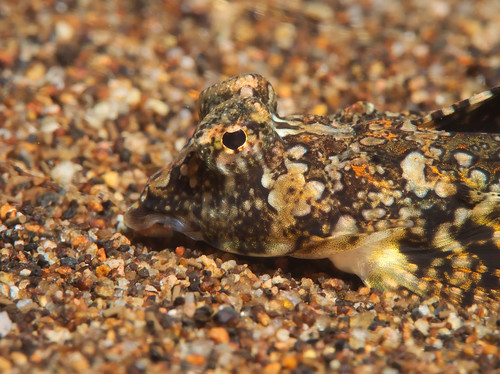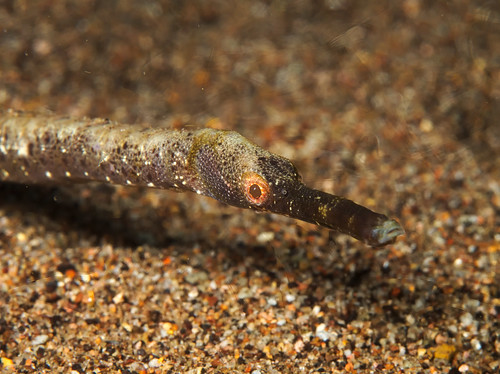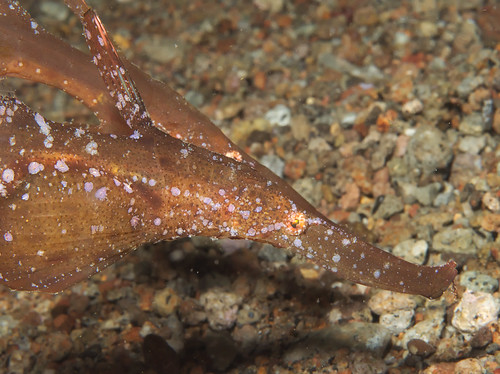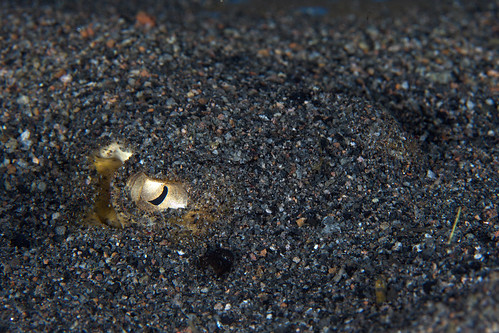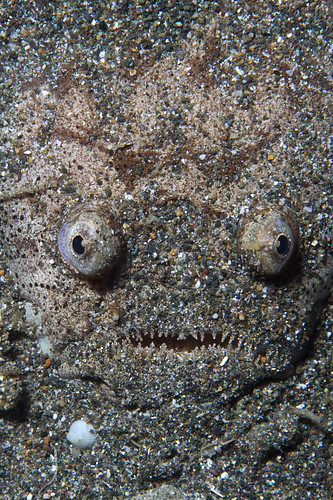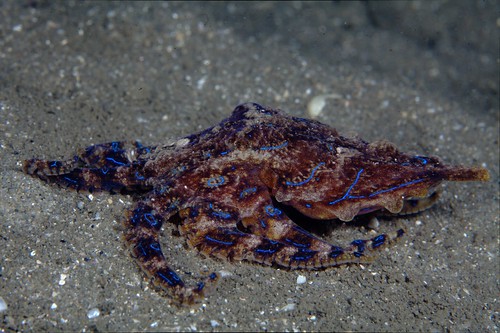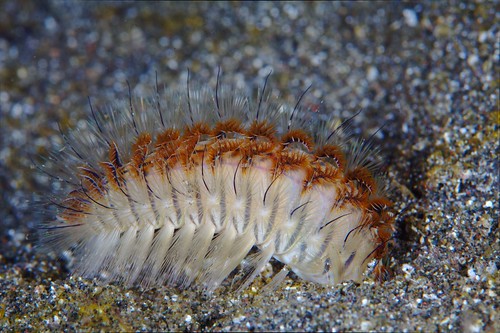Sand!
I currently live and dive in the south of Negros island, in the Visayas region of the Philippines. There is some of the best diving I have seen, ever, right at my doorstep. There are some corals on the shores of Negros, but actually not that many, and in some places all you can see underwater is sand …. boring? NO! The muck diving here is superbly amazing. Muck diving: that means to dive slowly, and to look for small, rare and unusual animals. There is so much living in the sand, visible to those who know how to look.
Living in the sand is not a trivial challenge for small fishes. They are exposed to the eyes and teeth of predators – that’s why coral reefs are the home to so many fishes, they provide a great variety of hiding places. So what are the strategies of dealing with life in the sand?
The most obvious one is camouflage: The skin color and pattern match the color and the granularity of the sand. This is seen very well in this sand-diver and in this dragonet:
Basically, that’s a very good tactic. Most predatory fishes hunt by vision, and if an animal is hard to see for a human with big eyes and a huge visual part of the brain, it will be very hard to see for a wrasse, however hungry it is. This must be a very hard sensory challenge for the wrasse. How does it still find enough food to survive? Reef fish biology and visual neuroscience are really sister disciplines, even though most reef biologists and visual neuroscientists are not aware of that!
A variant of the straight-forward camouflage is to resemble some kind of inedible piece of plant material which tends to float around underwater. The stick pipefish below is really a seahorse-relative, but resembles a stick (unsurprisingly). The robust ghost pipefish is also a member of the seahorse family and resembles detached blades off sea weed.
As a side note, these days a lot of plastic trash floats around underwater as well! I wonder when evolution will produce the first fish mimicking an empty sachet of shampoo!
There are other strategies for dealing with the exposed life in the sand as well. One is to hide under the sand. The sand-diver above does that, and so does this stingray. Hiding under the sand can be a defensive strategy as well as an offensive one. The stagrazer (pictured below the ray) is a predator working with the element of surprise. It’s so hard to see, for us and supposedly for a prey fish as well, that small fish occasionally swim above it, and are devoured in an instant.
I really enjoy watching razor-wrasses when I dive over sand. Check out this brief video to see how incredibly fast they can hide below the grains when they feel threatened (in this case by a diver, myself):
Note that in many cases the eyes of the animal hiding in the sand still stick out. Many eels like to keep their hindbodies in the sand. The garden eels, seen in this video, are an especially interesting example of this tendency Whole fields of these eels who never leave their hole in the sand, populate the underwater slopes of Dauin. It’s a sessile fish (not changing location during significant parts of their lifes, like plants or anemones):
A strategy related to simply covering yourself in sand is to build yourself a burrow. The jawfish below does that. Usually you see a few of these jawfish-homes next to each other. When you approach them too fast or too closely, the jawfish retreat deep into their burrow.
An unique strategy followed by some gobies is to is to partner up with a shrimp. The goby then exclusively concentrates on looking out for approaching predators, while the shrimp digs. I made a mini-documentary about this symbiosis:
Lastly, you can survive in the featureless sand if you are dangerous! The blue ring octopus below is very, very venomous. When it bites you, temporary paralysis and possibly suffocation (due to the paralysis of the diaphragm muscles ventilating the lungs) ensues. No wonder it feels no need to hide in a burrow, cover itself in sand or camouflage itself. The same goes for the bristle worm, below, protected by irritating spines.
So… lots of things to see in the sand. To discover these animals you need to dive in a very controlled manner, and to concentrate on every little irregularity you see in the sand (it could be an animal hiding!). To appreciate these unusual marine organisms, you need a bit of knowledge about their behavior. Happy diving!
